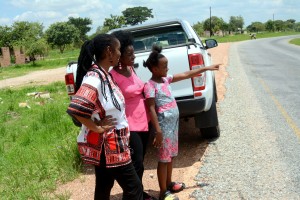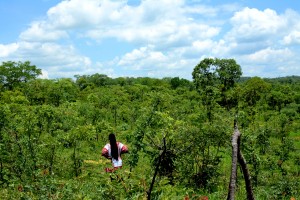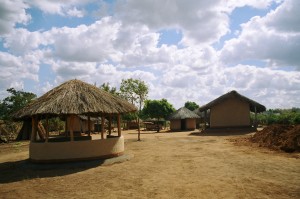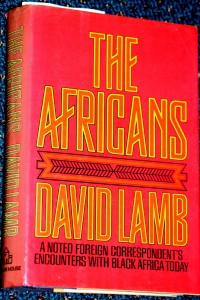by
Mwizenge S. Tembo, Ph. D.
Professor of Sociology
Introduction
While there are plenty of magazine articles, TV programs, and other sources on how and what it means to be a mother, there is very little about what it means to be a father. Most TV programs and discussions in the media tend to make fun of fatherhood. Some serious articles tend to always focus on the abusive, oppressive, drug and alcohol addicted, dead-beat dad, controlling, dysfunctional patriarchal father who is said to be the relic of the old traditional past but is said to dominate the behavior of many fathers today. While some of the problems of bad fathers exist, there is very little information on what it means to be a father today. This article is meant for perhaps millions of young men to day who would want to know what it takes to be a good father who is married to the mother of the child or children.
Any boy past puberty and adult man can be a father in a biological sense. But being a good father demands more. This article is going to discuss fatherhood from point of my own experience and wisdom. I have been married for 36 years. My wife and I have raised 3 children. I have also taught sociology in college for 36 years during which I taught sociology of the family for 6 years. I discuss the “Soul of Fatherhood” because being a father is more than just being able to buy groceries, changing a diaper or two, and barking orders to your children. Fatherhood means the deepest essence of the calm masculine strength, presence, persona, love and humor being infused into a child from when they are a baby in the womb (they can hear the voices), to the crucial adolescence, all the way to being an adult man.
History
For thousands of years, fatherhood meant being able to fight as a warrior as a member of a tribe to protect and defend one’s village and family. The man had to fight in war. The man had to be able to kill wild animals such as lions, bears, tigers, leopards, and others to defend the man’s family. Providing for his family required the man to know how to hunt for food, and later farming skills. These were skills boys and young men had to know before they could seek a wife to marry. As the European Industrial Revolution was spread all over the world through European colonialism in the 17th and 18th centuries, fatherhood increasingly meant learning the skills of reading and writing and being able to get an office or other job. Today the police and the army play the role of protecting the nation-state in general. As women have increasingly joined the labor force and gender equality in marriage has be emphasized, fatherhood has become increasingly difficult to define.
High levels of unemployment both in the Western and Third World means it is increasingly difficult for young men to play the role of a father by being able to provide for the family. The abandoning of the traditional socialization of boys and men, high levels of divorce and single motherhood mean that young men today increasingly go into marriage and other arrangements without having a clear knowledge of what it means and it takes to be a good father. The general tolerance of single motherhood means men and fatherhood may be seen as less important. This is not true. Fatherhood is very important for all children and more so for boys.
In order to be a good father, you need first, foremost and most important to realize that this is a full time role that you will play to eternity or the end of your life. Second, you need to be a good provider, protector and defender. Third, you need to be always there in the household taking care of the child, children and their mother. Fourth, both you and your wife or the mother must share a deep common bond beyond marriage; the unshakable and even unspoken conviction in both of you that raising your children and their welfare comes first within the context of love between the two of you. This is one of the key reasons why marriage vows include: “Till death do us part”. This vow is what provides the enduring love for you and your wife but also for the children. Fifth, as you go about being a father, some best parts of fatherhood are never realized at that moment when you are raising your child, but much later in life often when the child is an adult.

Fathers must spend time with their children teaching them how perform certain tasks such as how to change a flat tire.
Fatherhood Eternal Role
If you would like to be a good father, you have to completely embrace, enjoy and look forward to the role for the rest of your life. This attitude will make it possible for you to make the necessary sacrifices, adjustments, and changes as you raise and support your child or children. It is when you play the role of father half-heartedly that you will not be able to enjoy it and make the necessary sacrifices to be a good father. When I picked up my new born son and my wife that morning at University Teaching Hospital Maternity ward years ago in Lusaka in Zambia, I knew I was ready to be a father. I have enjoyed the role ever since as my wife and I had more children.
Provider and Protector
The most challenging and demanding aspect of fatherhood, is being a good provider. This means providing good and safe housing, having a job to provide food, clothing and security for the family. This role is very difficult to play today as there is high unemployment and most jobs require high technical skills. Well paid unskilled jobs are very few especially in developed countries. Being a protector means being the first line of security both inside and in the perimeter of your home. Children and their mother should never have to feel unsafe or threatened inside and outside the home. Being a good protector does not necessarily mean owning a gun. It just means developing the physical and mental capacity to react when there is an intruder or anyone who threatens the home.
Always Be there
Being always there for your wife and especially the children might be very difficult since society created the office job during the Industrial Revolution. For thousands of years, fathers and mothers live together in villages and worked side by side while farming to provide for the family. Therefore the father was always physically around. In today’s world of 18 hour work days to earn a living, the father and sometimes the mother might not always be physically present to raise the children. This is the tragedy of children who grow up and say: “I never saw my father. He was away at work every day. He missed my birthday parties.” It is for this reason that a father might consider changing jobs so that he can be with his children.
Being with the children means not just playing with them but doing certain tasks together. I learned how to take apart an entire bicycle and repairing it from watching my father. I watched my father use an axe to chop a tree with such power, efficiency and precision. I watched my father calmly kill a dangerous snake. When my father was away for most of the day, his coming home was a big celebration for my siblings and my mother. He usually brought goodies in his famous brown brief case on his bicycle; bananas, bread, sugar, wild meat, beef, buns, a live chicken for us to either slaughter or raise.
When as a father you are around most of the time, you can then be able to help discipline the kids. This has never meant beating the children contrary to what is a popular impression whenever people discuss discipline. It often just means the father’s deep voice telling the toddler to stop doing something dangerous. This might be one of the good biological evolutionary reasons men have deep voices. It sometimes means just doing the chore with the children until it is completed and reinforcing that with the child or children. This is how a father can teach his child the important discipline of completing a task once you have started doing it. You can take time to tell significant stories about your life as you spend time with your children.
Fatherhood also means not just choosing to do pleasant things with the child but also to be there during difficult times such as sickness. My father took me and my siblings so many times to the clinic by bicycle when we were young.
In 1989 my wife and I almost lost our son in Lusaka in Zambia. He woke up sick that morning with diarrhea, vomiting, and a temperature. I took him to a private clinic at noon. He was diagnosed with malaria. After taking the first malaria dose, he got worse with diarrhea, he was quickly dehydrating, his breathing became shallow, and the whites of his eyes were flickering. My wife sent me back with him to the doctor at 16:00 hours. The doctor said they had misdiagnosed my son. He had a stomach bacterial infection. Back at the house my very sick son took the first dose of the antibiotic. An hour later he was asking for food because he was hungry. This was sweet music to my wife, I, and any parent of a very sick child. Before I was a father, I liked to go to the bar a lot to drink after work. Had I gone drinking in my car that evening, I will remember this for the rest of my life. I believe my son would probably not be alive today. He would have died during the night while his father was away drinking. He was that sick.
Fatherhood and Sex
The biggest elephant in the room is the questions: “How is the sexual experience during fatherhood?” During the traditional past in the Zambian and African society, they used to practice what anthropologists call the post-par tum sex taboo. It was a custom where after the wife had given birth, it was a taboo for the couple to have sex until after 18 months to 2 years. During the traditional past, as long as the woman was breast feeding she never had a period. As soon as she stopped breast feeding weaning the child, she would resume menstruation. This may no longer be the case for the vast majority of women.
Since the woman was breast feeding the baby during that period, it was believed that if a woman got pregnant the child would die. The belief was that the pregnancy contaminated the woman’s breast milk which she was using to breast feed the child. The question as to how the father or the man lived without sex during that period has never really been investigated. My suspicion is that first on the list of how the man coped must have been masturbation. Second, is that the husband and the wife slept apart as the wife was sleeping with the baby. The man must also have made himself physically busy. He probably went on long hunting trips and had hobbies.
The man expended energy farming. I know that during that period, I joined a local informal recreation soccer group of 8 men and played soccer every day after work and came home tired after expending so much energy. My work and hobbies also kept me very busy. My wife was also very busy with the baby, work, and household chores. What may have kept the couple excited during the wait was looking forward to the night they would have sex again. The father having sex outside marriage was also unthinkable as there were also taboos against adultery. A few couples in the traditional past may have solved the problem by the wife agreeing that her husband take a second wife.
Father and Mother Common Bond
The married father and mother is perhaps one of the most important bonds; the deep conviction between the married man or father and the woman or wife that raising children transcends whatever their temporary moods or feelings every day might be. This provides stability for both the children and the couple. When this is the common bond, then the parents are less likely to think of quitting or the “D” word or divorce at the slightest problem parenting. This conviction created the most stable environment for fatherhood. I share this conviction in this article. http://sufferingsoul.com/suffering-soul-child-divorce/
Best Part of Fatherhood
The best part of the fatherhood is the immediate gratification you get from your child calling you “Daddy” and crying that they want you to carry them if they are small. Playing with them and taking them on a walk or just eating with them. The bigger and better part is when you have done all the hard work raising them and now they are either in school, college or an adult. You as a father will feel as a sheer miracle that you had the privilege of being part of raising this human being form when they were a baby. That good feeling is indescribable and can never be fully conveyed to someone who has never been a real or good father. That feeling of being a father will be with you for the rest of your life.















































































